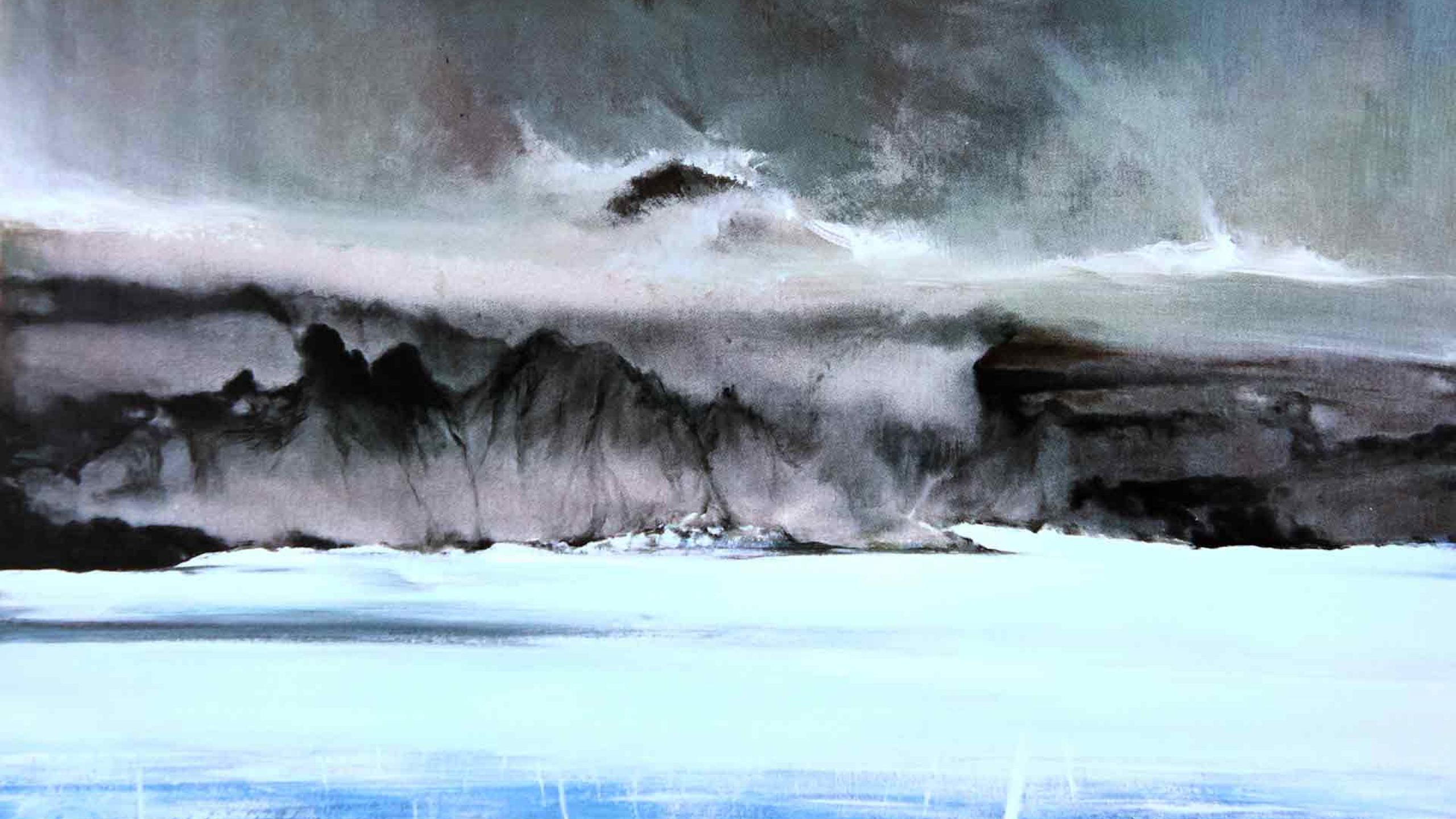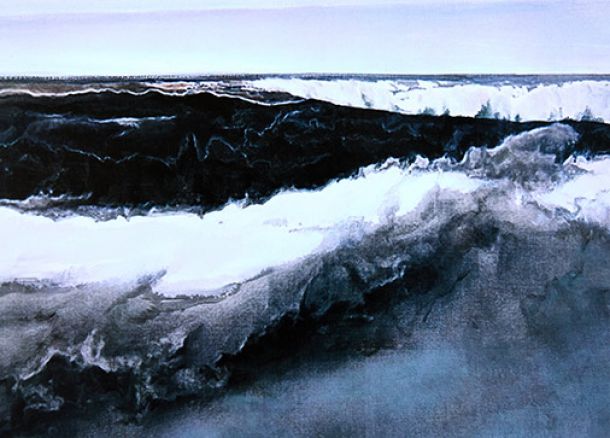That Was an Incredibly Inspiring Exhibition by Kaydan Kirkpatrick

The similarity between friendship and art is that neither of them have boundaries among different people or various categories. Mr.
Yu Runde and I are those people who have a world differences, yet it had nothing to do with our friendship. My first acquaintance with Mr. Yu was totally by chance. It was more than ten years ago, at the beginning of the 21st century, in Taiping village and I was still a junior poetry critic while Yu was a junior artistic teacher back then. Although we had little knowledge of each other’s field, our conversation was still a smooth and happy one as we paid to each other our mutual appreciation and respects. Since then, we have developed our trans-field friendship and it grows even more profound as time flies.
My first impression on Yu was that he was an insightful artist and had a critical view towards contemporary arts. That conclusion was drawn without seeing his paintings. Rather, I conclude it from our earlier meetings, during which Yu made brilliant remarks on artistic composition in contemporary context as well as the potential mistake one might make in that course, which were based on his profound and thorough understanding of artistic theories.
During the recent years, Yu has been working as a leading professor at Tsinghua Academy of Art and Design and promoted the elite artistic education program. Thousands of talented junior painters and art lovers have been attracted to this program out of the admiration for him. Not only did he invite a lot of scholars on art and literature to give lectures for students, but he himself worked as a teacher and postgraduate supervisor. Under the subliminal influence of Yu’s artistic value, many green hands have turned from amateurs into artists. No wonder there were many renowned contemporary artists who regarded Yu as their life mentor. In this sense, Yu was not only an outstanding artist but also an excellent teacher.
Not long ago, I paid a visit to Yu’s studio near the Tsinghua Garden. It gave me strong visual impact at the seeing of his collection of contemporary paintings. I had seen some stirring artworks on other occasions before, yet Yu’s works were the most impressive in aesthetic sense. In other words, Yu’s paintings possessed a distinctive poetic elegance. In this context, poetic elegance referred to a combination of visual impact and artistic values, namely, aestheticism together with humanism. Taking his painting Falling for example, Yu employed a shade of color to symbolize the person falling from the upper air, so as to express a strong passion generated from the bottom of his heart. In this painting, the character and color shade were not the vehicles for expressing emotions, but a certain emotion in itself.
Yu’s has already formed his own artwork style featuring modernity and poetic elegance. Viewing from the artist’s personal emotion and ideological pursuit, these paintings conveyed the subject matters of modernistic experiences or spirits, such as life, desire, existence, anxiety, melancholy, loneliness, separation, emptiness, soul and so on. Those subjects were the most representative symptoms of modern life, which revealed Yu’s humanistic values and modernistic approach. Accordingly, Yu established his own aesthetic values in the choice of color and character plotting. From my point of view, he had a particular talent in using colors to convey ideas. For example, to express a strong sense of weightlessness, Yu employed a couple of strong contrasting colors–blue and red–to present the character’s self-conflicted, split-minded state, suggesting his professional master of painting techniques.
In short, Yu was not only an excellent art teacher, but also a talented artist with the sense of poetic elegance. His original art style attributed to his distinctive aesthetic values and pioneering artistic theories. Judging from his own art works, Yu advocated artist’s active intervening of social lives while remained experimental in spirit and independent in personality. In other words, a genuine artist was supposed to keep a keen insight not only to the realistic society but also the inner world of human beings, thus achieving the unity between the realm of idea and reality and presenting in its full length the sense of poetic elegance. I believed he has made it. Yu strongly opposed the over-emphasis on craftsmanship and the pure pursuit of visual impact. There seemed to be several poetic elements in Yu’s painting that were inherited from the works of Edward Munch, renowned expressionist artist, exhibiting a distinctive combination of oriental idealism and modern western poetic elegance.
In a nutshell, I considered Yu as one of the few artists who possessed the poetic elegance in contemporary context. In other words, he had such consciousness during the construction of Chinese artist’s imagery. His pioneering spirit served to break the habitual mode in art composition and help rebuild the confidence and independence among Chinese artists in the current context.

Tan Wuchang, a native of Yongxin, Jiangxi Province, was admitted to the Department of Chinese Language and Literature at Peking University in 1994. He obtained his Master’s degree in Contemporary Literature in 1997. In September 2001, he returned to the Department of Chinese Language and Literature at Peking University to pursue a Ph.D. in Modern Chinese Literature, graduating in June 2004 with a Doctorate in Literature. He is currently teaching at the School of Chinese Language and Literature at Beijing Normal University.


